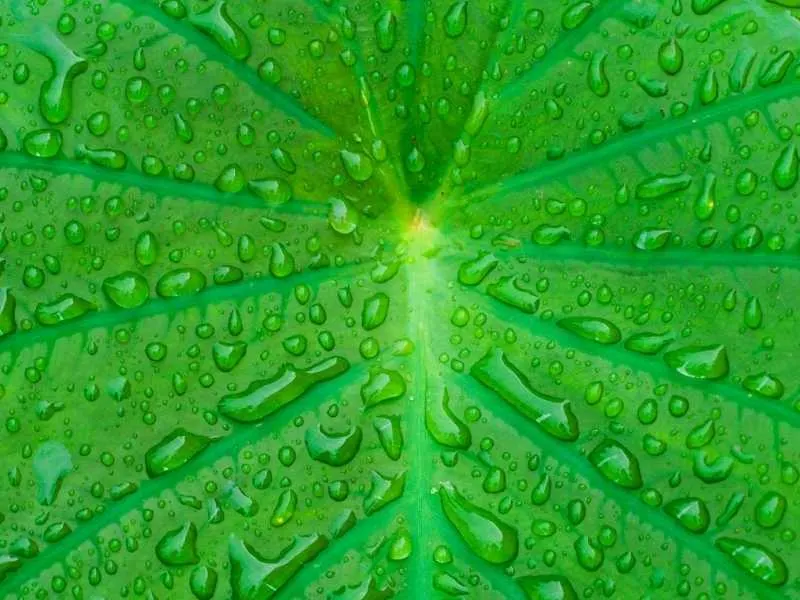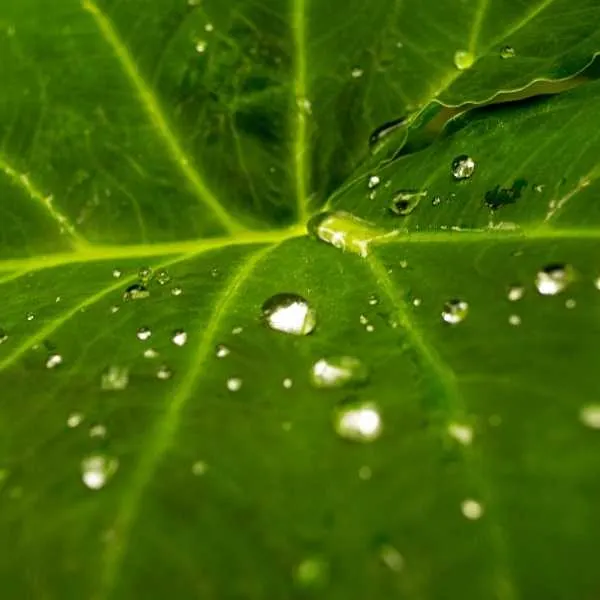Elephant Ear Plant Dripping Water – Why and What to Do About It?
If you want to grow a lush green garden with elephant ears, you need to create the ideal environment. This means ensuring that they receive a lot of bright, indirect sunlight, maintaining the temperature between 60 and 80 degrees Fahrenheit, creating a humid environment and watering the soil regularly.
Do you enjoy walking around your garden in the morning enjoying the sight of the gorgeous and bold elephant ears? We bet you do!
Then you must have noticed drops of water on the tips of each leaf of your elephant ears. It is definitely not dew. They look like they are crying.
If you have noticed your elephant ear leaves dripping water and are wondering how and why this happens, read on to find out. I’m here to help you understand what is really going on and what you can do about it.
So why do elephant ear plants cry?
The rule of thumb when it comes to watering your elephant ears is moist but not saturated soil. You should water your elephant ears when the soil starts to feel a little dry. When you overwater your elephant ears, or they get too much water from heavy rainfall, the result is that your plants will start to weep or drip water from the leaf tip.

Related Articles:
- Elephant Ears Drooping – Why + the Fix
- Elephant Ear Not Sprouting – Why + the Fix
- Do Elephant Ear Plants Come Back Each Year?
- Alocasia Leaf Curling – 8 Reasons + Possible Solutions
Why do Elephant Ear Plants Cry?
Elephant ear plants drip water through a process called Guttation. Don’t be confused by that word; it simply means that certain varieties of plants expel water from specialized cells that are called hydathodes.
Hydathodes are cells located along the edge of your elephant ear leaves.
If you have forgotten that the plants have a vascular system for the sole purpose of transporting water to the leaves from the roots, then you will be reminded when you see water dripping from the tips of the leaves.
When guttation happens, it is a sure sign that you have over-watered your elephant ears. The roots are thoroughly saturated, and this will put pressure on the rest of the plant, forcing it to release moisture.
Elephant ear plants love water. You need to provide them with consistently moist but never wet, saturated or soggy soil.
Guttation is entirely different from transpiration. If you are totally into gardening and have been growing a variety of plants for a while now, you must have noticed your houseplant leaves developing water droplets on their tips.
It is a very common phenomenon, just like people sweating. What is happening is a phenomenon called Transpiration. The water is carried around the plant and evaporates from the leaves and other parts. When the weather outside is humid or dewy, the water droplets will gather on the leaves.
Elephant ear plants are a real showstopper, and the one distinctive feature is the arrow-shaped leaf tips. Now that you know the weeping effect is because of too much water, you may be wondering what you should do about it.
How Does Guttation Cause Your Elephant Ears to Weep?

All plants absorb water and require both nutrients and water to thrive. Some plants (vascular plants) use guttation to maintain this balance. Vascular plants grow tall and have specialized cells that are capable of transporting water with varying degrees of pressure.
This process typically occurs during the night when the air is humid and the weather is cold. Not just that, the soil is damp, and the roots have absorbed too much water. These are ideal conditions for guttation to happen.
Under such conditions, less moisture will evaporate from the leaves. But, the roots are still absorbing all the moisture.
The extra moisture absorbed will create a pressure that will push out the moisture already present in the leaves. The result? Small beads or droplets of water on the leaves!
See water droplets forming on the leaves of your elephant ears? It is extra water along with minerals, chemicals and enzymes which are called xylem sap.
What to Do When Your Elephant Ears are Dripping Water?

If you notice little droplets of water appearing on the heart-shaped leaves at the very tips where they gather in the form of an arrow, then you know it’s because of excess water – more than what your elephant ears need.
Check to see if there is too much water. If you see no sign of overwatering, such as root or stem rot, or spots on the leaves, simply put off watering for a few days. This will stop the water from dripping from the leaves. Instead of crying or weeping, what you will get are happy elephant ears!
If your elephant ears are crying far too frequently, you should carefully inspect the soil moisture before you water the plant and also look out for other signs of overwatering.
Generally speaking, guttation is harmful to your elephant ears only if you end up applying too much fertilizer. The minerals contained in the fertilizer will accumulate on the tips of the leaves and burn them!
The tell-tale signs of over-fertilization are minute, white deposits on the leaf tips. This is a sign that you should reduce the frequency and amount of fertilizers applied.
How Often Should You Water Your Elephant Ears?
Now that you know that overwatering is the reason behind your elephant plants weeping, you may be wondering how often you should water your plants.
You should water daily during the summer, preferably in the morning. This will give the plant enough time to get dry before night.
Remember that elephant plants are heavy feeders and love water. You need to give your plants at least 2 to 3 inches of water a week.
Elephant Ear Plant Dripping Water – Conclusion
Elephant plants “crying” or dripping water will not hurt your plants. But if your plants are indoors, the dripping water may affect the furniture or your flooring. To stop your leaves from dripping or weeping, you should simply cut back on how much you water your plants.
The reason the elephant ear plant leaves drip water is that there is more than enough moisture they are holding – as much as it is in their capacity to do so. They are simply getting rid of the extra water.
When it’s really humid, your plant doesn’t require as much water as they do at other times. Simply watch your elephant ears and adjust how frequently you water so that you never go overboard.

